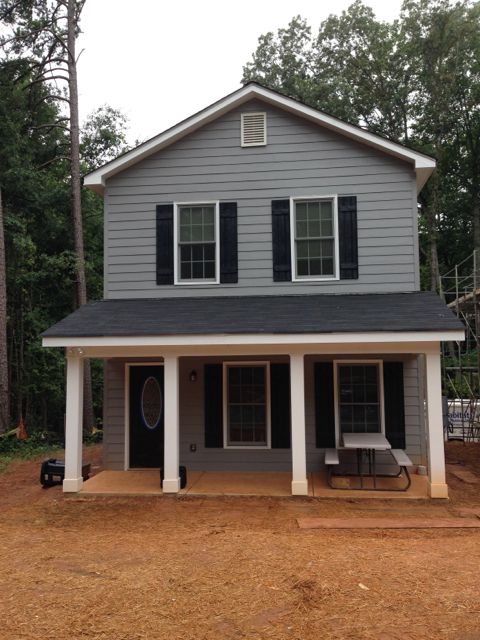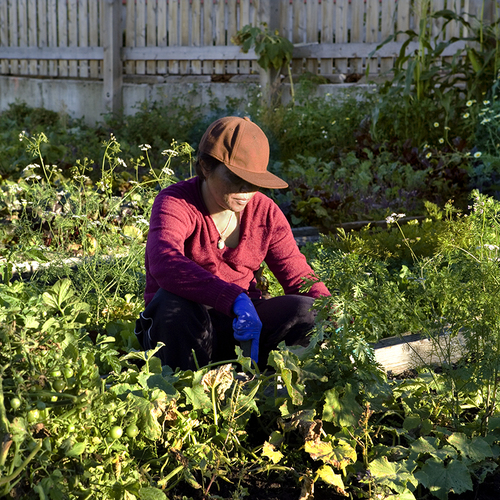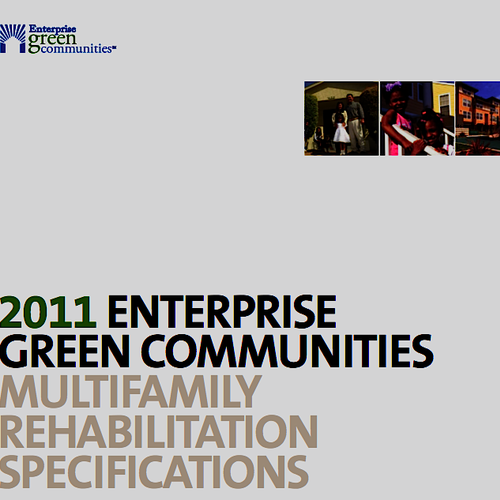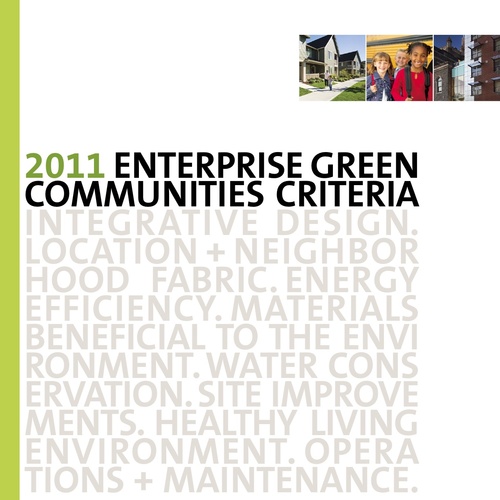Image Credit: Energy Vanguard
Image Credit: Energy Vanguard The numbers for Enterprise Green Communities show a vibrant program that is having a significant impact.
Image Credit: Enterprise Green Communities
The best green building program you’ve never heard of is probably Enterprise Green Communities. Everyone knows about LEED, of course. Regional programs, such as EarthCraft House and Minnesota GreenStar, also have name recognition in their areas. But unless you’ve been involved with Enterprise Green Communities, you may not have even heard of it. The recent release of their new program criteria means that it’s time for that lack of name recognition to change.
About Enterprise Green Communities
The big focus of Enterprise Green Communities is on affordable housing. According to the group’s website, “We developed our Enterprise Green Communities Criteria to bring the improved health, economic and environmental benefits of sustainable construction practices to low-income families.”
The group began in 2004, and the graphic reproduced as Image #2 (below) shows how far they’ve reached during the past 11 years: 550 housing organizations supported, 38,000 green healthy homes built, and $2 billion invested.
The 2015 Criteria
This year, Enterprise Green Communities introduced their new criteria, a major update from the 2011 guidelines. (You can download the full pdf from their website.) As I’ve looked over the criteria, I’ve been impressed. They put together a great team to decide what to include and how to implement the criteria. The technical working group, for example, includes some names that may be familiar to readers here: Alex Wilson, Peter Yost, and Terry Brennan, among others.
The program, like most others, includes mandatory requirements and points for optional items. To qualify, a project has to do all of the former and get 30 or 35 of the optional points, depending on the type of project (new or rehab).
The requirements and options are spread across the following 8 categories:
Each of those categories is fleshed out pretty well, too. In number 7, for example, they cover ventilation, garage isolation, radon, dryer exhaust, and much more. Download the criteria and see for yourself.
Passive House gets points!
I’d like to close by drawing your attention to the optional item that gives points for Passive House certification (and Living Building Challenge and Zero Energy Ready Homes, too). If you look at item 5.2b, you’ll see this:
REQUIREMENTS
Certify the project in a program that requires advanced levels of building envelope performance such as PHIUS, Living Building Challenge and/or DOE Zero Energy Ready Home.
RATIONALE
These complementary whole building certification programs emphasize strategies that aggressively reduce whole building energy loads, reducing the need to heat and cool, reducing utility bills, reducing associated greenhouse gas emissions, and increasing project capacity to sustain habitability during loss of power.
RECOMMENDATIONS
Each of these programs requires a significant commitment to ensure significant levels of project performance. Begin strategizing how to achieve your project goals through dual certification with these programs as early in the integrative design process as possible.
That’s a nice way to recognize that building or renovating to Passive House standards will get you a really good house that provides the healthfulness, comfort, and low energy bills that will make the home affordable to live in.
If you’ve never heard of Enterprise Green Communities before, I hope you’ll check it out. Everyone knows about the LEED green building program and Habitat for Humanity for affordable housing, but Enterprise deserves some major props for what they’ve accomplished since 2004. The new criteria are likely to take them to a whole new level.
Allison Bailes of Decatur, Georgia, is a speaker, writer, energy consultant, RESNET-certified trainer, and the author of the Energy Vanguard Blog. Check out his in-depth course, Mastering Building Science at Heatspring Learning Institute, and follow him on Twitter at @EnergyVanguard.
Weekly Newsletter
Get building science and energy efficiency advice, plus special offers, in your inbox.
















3 Comments
Definition of Net Zero
Allison - I had posted a question on your last blog that I was hoping you could address(on wood heat and net zero).
Wood can be net zero energy (or not), net zero carbon, (or not)
Energy and carbon accounting for wood burning gets very complicated very quickly. Live forests and forest soils sequester carbon, forests produce significant amounts of methane, which varies by forest type, etc.
Wood that is grown / harvested in a non-sustainable manner is not net zero anything- comparable to burning fossil fuels.
The thermal efficiency of the wood-burner can also play a large factor in which side of the line it falls. The state of Massachusetts commissioned a careful carbon accounting of wood biomass fuels based on it's local forest types under different forestry management practices a few years ago, in part to determine the relative verditude of biomass power generators and heat/power cognerators, that was later used to implement minimum efficiency standards for any new biomass power. The thermal efficiency necessary to break even with burning natural gas made it impossible to commission new power-only wood biomass systems, but heat/power cogens and heat-only systems are technically feasible. See:
http://www.mass.gov/eea/docs/doer/renewables/biomass/manomet-biomass-report-full-hirez.pdf
or for the executive summary:
https://www.manomet.org/sites/default/files/publications_and_tools/Manomet_Biomass_Report_ExecutiveSummary_June2010.pdf
wood zero energy
Thanks,Dana. I live on a 5 acre wooded (mostly) lot. I plan to build a home that will use maybe 1 cord of wood for the heating season.It seems like a "no brainer"to pull one cord from the woods yearly, but the "summary" article makes it more of a "brainer",and very complicated. My partner and I love a wood fire in an efficient small wood stove,though I understand its problems in a very tight house.
Log in or create an account to post a comment.
Sign up Log in